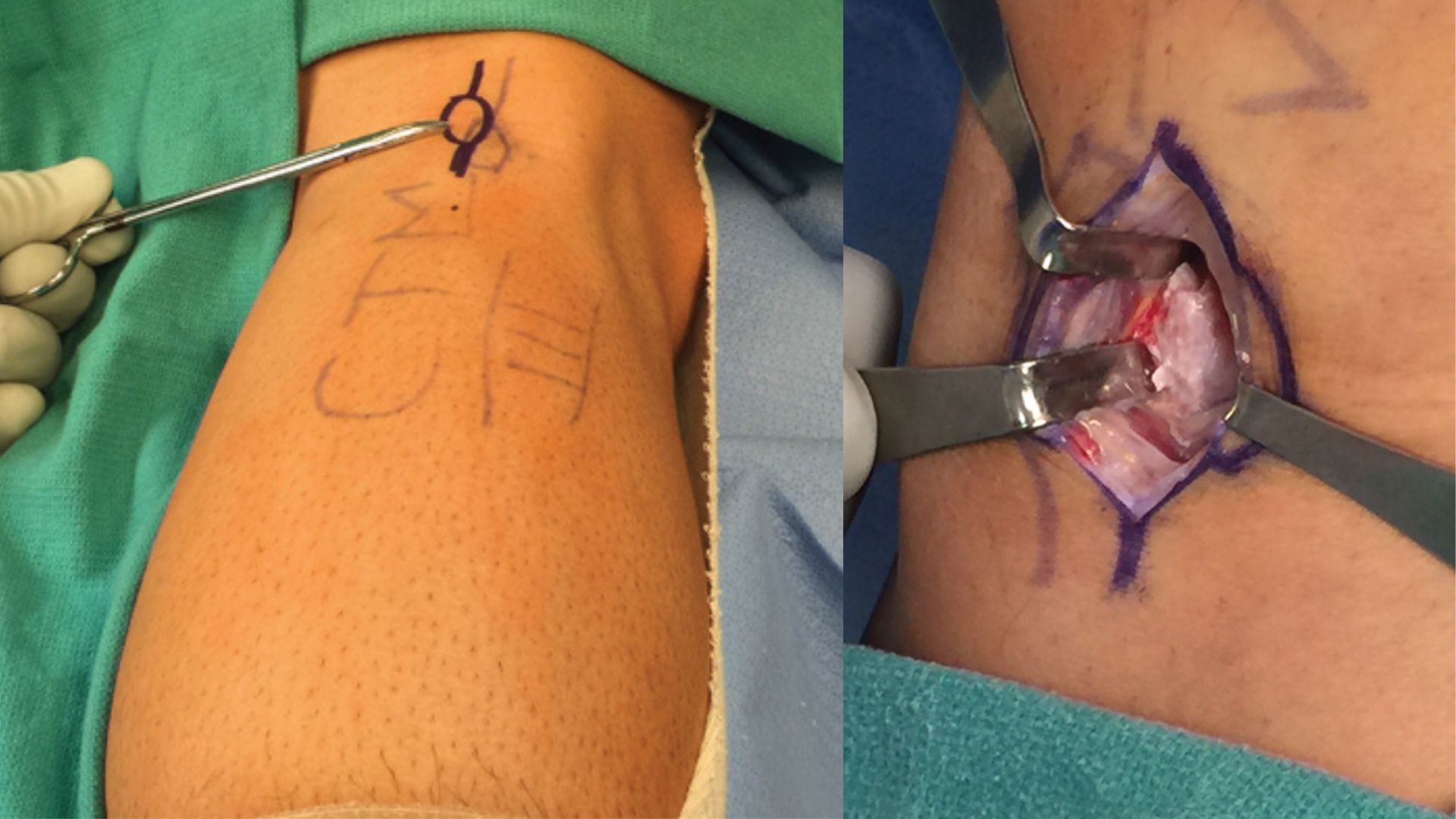Blog
Fabella Syndrome

What are the structures and proposed mechanisms involved in Fabella Syndrome?
1. Fabello-Fibular Ligament: Either compressive or tensile forces2. Gastrocnemius Tendon Compression and irritation of the tendon
3. Femoral condyle Periosteal Inflammation
4. Posterior Capsule Compression of Fabella
5. Common Fibular nerve Compression of neural tissue between Fabella and fibular head
What are the common symptoms of Fabella syndrome?
Most of the patients of Fabella syndrome present with intermittent posterolateral knee pain, whichis mechanical. The pain is accentuated by full knee extension/hyperextension, and localized tenderness results from compression of the Fabella or the Fabello-fibular ligament against its condylar surface. The symptoms persist as a dull ache even at rest. Fabellar bone dimensions have been described as ranging from 0.4 to 2.2 cm in size in symptomatic cases. It has been suggested that a Fabella larger than 1 cm in size requires surgical excision, especially in patients undergoing total knee replacement. The proximity of the Fabella to the common peroneal risks its pathology. The impact of the Fabella bone on the femoral condyle has also been implicated in causing synovial irritation, bone edema and roughening of the articular surfacesHow is Fabella syndrome treated?
A trial of conservative care is recommended before consideration of surgery in children with Fabella syndrome. Conservative management would include analgesic medication, immobilization, activity restriction, steroid injection and manual therapy.For many adults with Fabella syndrome, however, Fabellectomy has been advised early in the management of painful Fabella in some reports.

Conclusion
Fabella syndrome should be considered an important pathological entity in patients with posterolateral knee pain, especially with hyperlaxity or injuries with or without common Peroneal nerve palsy. The incidence of Fabella syndrome appears to be higher in the Asian population. In light of limited publications about the Fabella syndrome, its function and the consequence of its presence or absence are still unclear. The treatment treating Fabella syndrome includes both non-operative treatment and surgical excision. Even surgical intervention has guarded results, so treatment should be selected after weighing all risks and benefits, and this might be a subject for further research to find out the best possible treatment for Fabella syndromeIf you have or know someone with Posterolateral knee pain and would like to know more about the treatment, contact us at info@apexsportsphysicians.com.